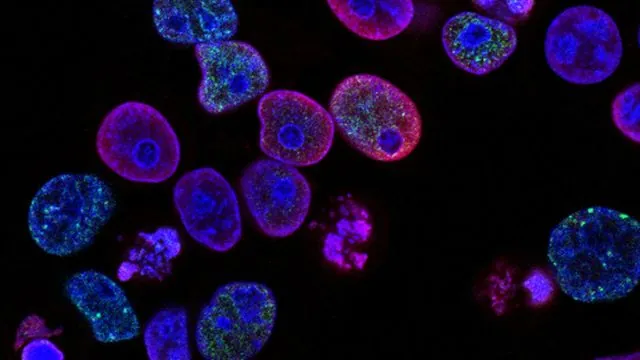
Breakthrough Microfluidic Device Unlocks Secrets of Tumor Shape and Its Role in Cancer Aggressiveness
2024-11-18
Author: Wei Ling
Introduction
In a groundbreaking study, researchers at the University of Toronto's Faculty of Applied Science & Engineering have developed a revolutionary microfluidic platform that allows for unprecedented manipulation of tumor shapes. This advancement paves the way for more personalized and targeted cancer research, particularly regarding how tumor morphology may predict cancer cell behavior and aggression levels.
Research Team and Findings
Led by Professor Edmond Young alongside promising researchers, including PhD candidate Sina Kheiri, the study, published in *Advanced Materials*, exposes the critical relationship between tumor shape and malignancy. Traditional methods often relied on nearly spherical models of tumors, overlooking the complex and varied shapes tumors can exhibit in real biological settings.
“As we explored tumor models, we realized we were missing vast opportunities in understanding cancer,” Kheiri explains. “In fact, our research revealed that only about 20% of breast cancer tumors are spherical. This means we’ve been confining our studies to a limited scope, neglecting many that display unique shapes.”
The Microfluidic Device: ReSCUE
The newly designed microfluidic device, aptly named Recoverable-Spheroid-on-a-Chip with Unrestricted External Shape (ReSCUE), allows researchers to recover and manipulate tumor shapes in real-time. This flexibility enables detailed downstream analysis that wasn’t possible with previous methods, which often resulted in static and non-representative models.
Innovative Biomimetic Hydrogel
The team’s innovative platform utilizes a biomimetic hydrogel known as EKGel, which imitates the natural environment of human tissues, allowing patient-derived cancer cells to grow in a more realistic manner. This method not only supports growth but also facilitates a deeper understanding of how shape influences tumor aggressiveness.
Shape Influence on Tumor Behavior
During experiments, the researchers noticed that specific shapes such as rod and U-tumoroids exhibited higher cellular activity and proliferation rates, particularly at convex, outward-curving regions. This suggests that tumors with certain shapes may demonstrate more invasive characteristics, crucial for effective treatment strategies.
Impact on Cancer Treatment
“Understanding the relationship between tumor morphology and cell behavior can significantly impact how we plan treatments, including targeted therapies and drug delivery methods,” said Kheiri. “Our goal is to provide a framework for testing how tumors respond to treatments in a more nuanced way.”
Ongoing Research and Future Directions
As a postdoctoral researcher currently at MIT, Kheiri continues to aid the Young Lab in further developing the ReSCUE platform. They have recently filed a U.S. patent, eager to expand their research and explore more complex tumor models that could include features like surrounding vasculature—similar to the structures found in real tumors.
Conclusion
Professor Young envisions that these advancements will assist biologists and cancer researchers in gaining a more profound insight into cellular responses to various treatments. “With greater control over our modeling systems, we can create more realistic environments for testing. This will enhance the accuracy of drug efficacy studies, potentially leading to better outcomes for cancer patients,” he states.
This groundbreaking research highlights an exciting frontier in cancer investigations—one where the shape of tumors may soon play a pivotal role in personalizing and enhancing treatment protocols. Stay tuned as these researchers continue their journey to unlock the intricacies of tumor biology and improve cancer care.


 Brasil (PT)
Brasil (PT)
 Canada (EN)
Canada (EN)
 Chile (ES)
Chile (ES)
 España (ES)
España (ES)
 France (FR)
France (FR)
 Hong Kong (EN)
Hong Kong (EN)
 Italia (IT)
Italia (IT)
 日本 (JA)
日本 (JA)
 Magyarország (HU)
Magyarország (HU)
 Norge (NO)
Norge (NO)
 Polska (PL)
Polska (PL)
 Schweiz (DE)
Schweiz (DE)
 Singapore (EN)
Singapore (EN)
 Sverige (SV)
Sverige (SV)
 Suomi (FI)
Suomi (FI)
 Türkiye (TR)
Türkiye (TR)